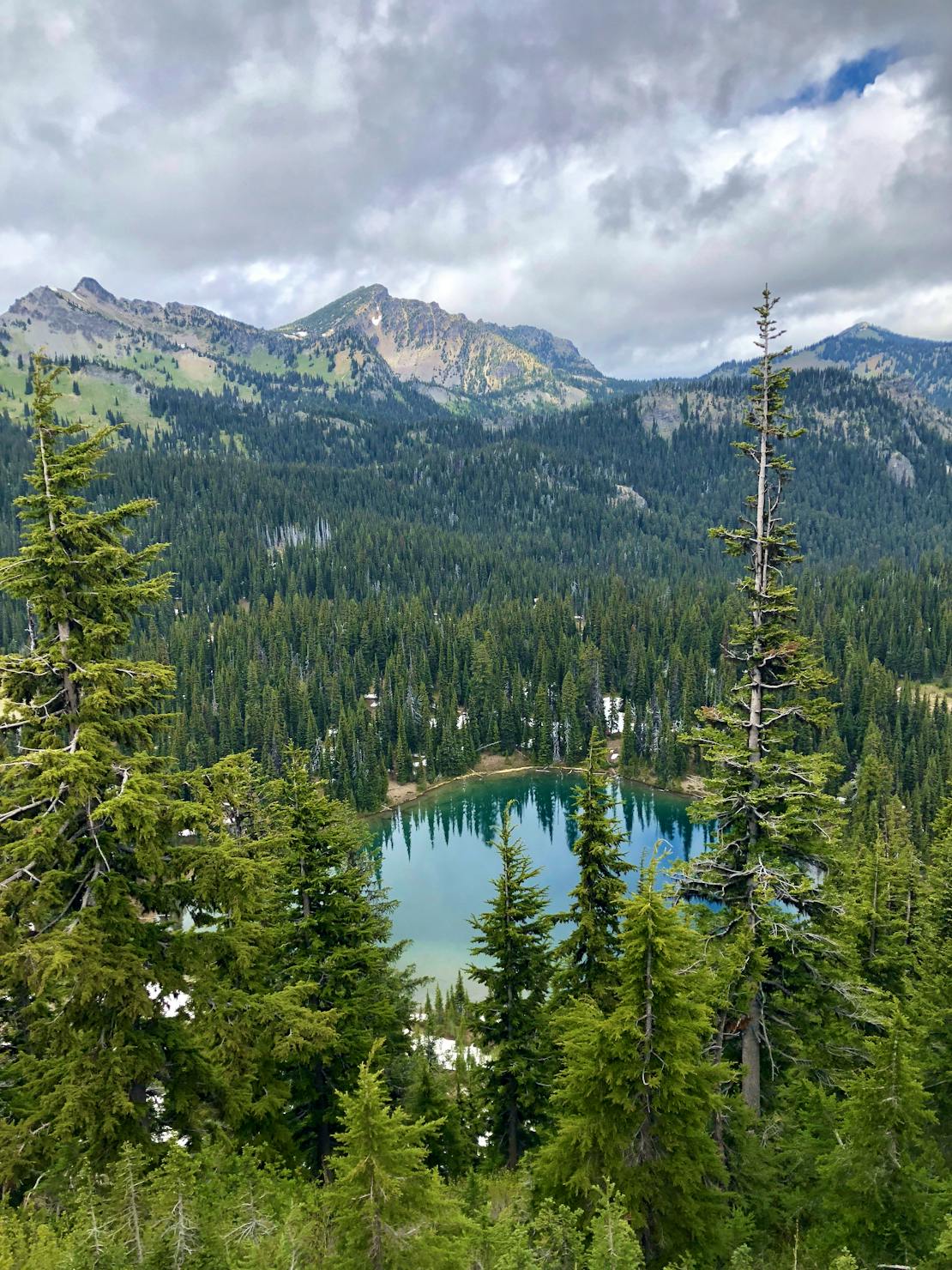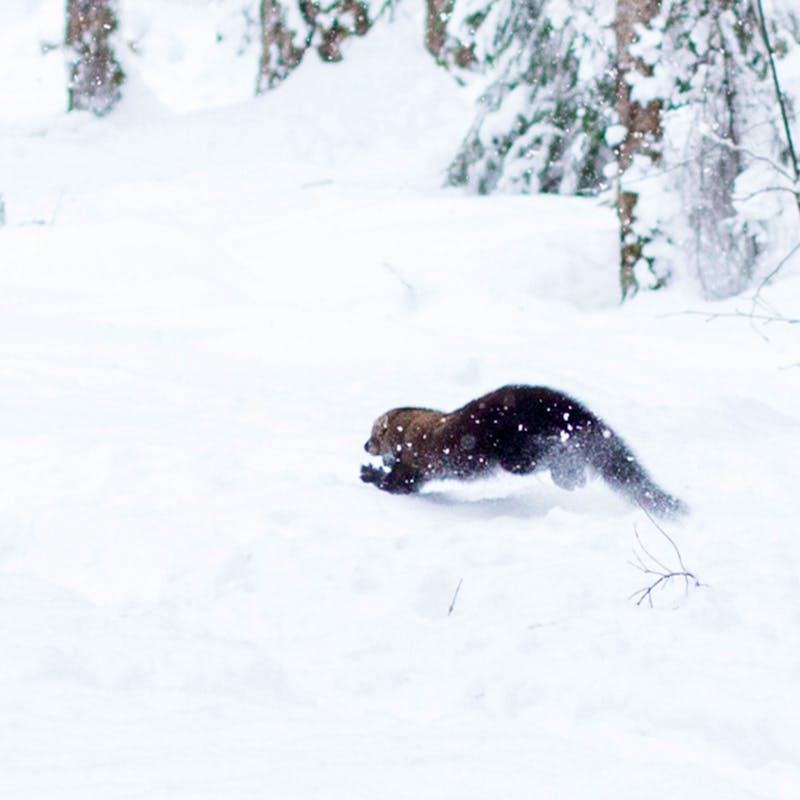This World Wildlife Day theme set forth by the Secretariat of the Convention on International Trade in Endangered Species of Wild Fauna and Flora (CITES), “Forests and livelihoods: sustaining people and planet,” is especially fitting for the America’s Pacific Northwest.
About Pacific Northwest forests
Pacific Northwest forests, including those managed by the U.S. Forest Service and Bureau of Land Management (BLM), contain immeasurable value, providing clean water and air for downstream communities plus cultural significance and first foods to the region’s Tribes, sequestering carbon, and serving as important habitat for the region’s distinctive biodiversity. However, a long history of anthropogenic impacts, primarily intensive logging, extensive road building and fire suppression, means that much of this landscape requires thoughtful conservation and proactive restorative management to ensure it remains healthy and resilient. Continued and enhanced protection, particularly of old forest habitats and aquatic ecosystems, is required for these forests and the flora and fauna they hold as threats mount. Climate change, unprecedented wildfire events, invasive species and escalating human disturbance, including rapid growth into previously undeveloped forested areas, all pose significant risks to the integrity of our Northwest forests.
Temperate rain forests
The temperate rain forests on the west side of the Cascade crest, dominated by Douglas fir and western hemlock, and the more-fire adapted dry forests on the east side that include Ponderosa and lodgepole pine, both offer high-quality habitat to many of the region’s important yet imperiled species. The endangered northern spotted owl and marbled murrelet both require old growth trees for nesting (and also for foraging, roosting and dispersal in the owl’s case). Much of the region’s remaining old forest habitat was protected within “Late Successional Reserves” (LSRs) on national forests and other federal lands, as allocated in the region’s hallmark Northwest Forest Plan, originally enacted in 1994.






Wildlife in the Pacific Northwest forests
A host of carnivores—the Pacific fisher, American marten, Sierra Nevada red fox, wolverine, Canada lynx, gray wolf and some of Washington state’s last remaining grizzly bears—many of them struggling to keep a foothold in the Lower 48, call these forests home and travel the wildlands and riparian corridors.
Salmon, the Pacific Northwest’s “life blood,” require the coldwater streams of the upper forested watersheds found on national forest lands to successfully spawn and free-flowing rivers from the mountains down to the Salish Sea and beyond to literally navigate their amazing anadromous lifecycle. These forests include critical habitat not only for Endangered Species Act protected chinook and other salmon, but also steelhead, bull trout and other aquatic species. And what happens in the forested upper watersheds impacts everything downstream, including the iconic southern resident orca, a distinct population that number only 75. These individuals and their strong-matrilineal-bonded social groups depend on high quality and quantity chinook to thrive and reproduce.
Logging in the Pacific Northwest forests
Not long ago timber, pulp and paper production dominated the region’s economy . The Forest Service and BLM manage much of the forests, and from the mid-1960s to the 1990s, logging on public forests and on private lands owned by industrial timber giants like Weyerhauser, Louisiana-Pacific and Plum Creek produced the raw materials to support the needs of a growing nation. Most often, timber was harvested by clearcutting, a practice that produced large openings in the otherwise densely forested mountains of the region. Switchback roads zig-zagging up the mountainsides built to access logging areas scarred the landscape, with soil and sediment eroding down the hillsides to foul rivers and streams. The accelerated pace of timber harvesting and roadbuilding in the region through the late 1960s, 1970s, and 1980s raised concerns among environmental activists, longstanding communities and transplants that began flocking to the region for jobs.


The value of old growth forests
Scientists began to study the Pacific Northwest’s ancient forests to better understand their contributions to the region’s health and learned about the forests’ rich and diverse flora and fauna and what they needed to flourish. As Jack Ward Thomas, a Forest Service scientist who eventually became chief of the agency once said, “These forests are not only more complex than we think, they are more complex than we can think.” It was these discoveries that brought to light the complex and interconnected nature of the old-growth forests leading biologists and researchers to question timber-dominant management practices.
Managing Pacific Northwest forests
The National Forest Management Act (NFMA) and the Federal Land Management Policy Act (FLPMA) directed the Forest Service and BLM to develop plans to manage the forests for not only timber, but water, wildlife, grazing and outdoor recreation as well. And the Endangered Species Act (ESA), passed in 1973, requiring these agencies to ensure that their actions would not threaten the survival of fish and wildlife species in the region.
The northern spotted owl, in particular, became the focus of questions about the impacts of clearcutting and extensive timber harvesting. Inhabiting the region’s old-growth forests, the northern spotted owl was declining in numbers and research indicated that extensive clearcutting of old forest habitat was contributing to the bird’s decline. Eventually, citizens petitioned the U.S. Fish and Wildlife Service (FWS) to add the owl to the endangered species list and asked the court to halt the clearcutting that they believed was causing the bird’s demise. When that petition was granted, the potential consequences for timber-dependent communities and industries were enormous.
In 1993, President Clinton and Vice President Gore convened an unprecedented “forest summit” which brought together cabinet members; regional leaders from government, industry, state and federal fish, wildlife and forest management agencies; Tribal and community leaders; conservationists; and scientists. At the end of the summit, President Clinton committed to develop a plan to manage these forests to sustain both the ecological and human communities in the region. The resulting Northwest Forest Plan was controversial and challenged in court, but, eventually, the plan was upheld by the courts and the transition to a more sustainable economy balancing the needs of fish, wildlife and people began.
President Clinton’s Northwest Forest Plan may have been the first-ever landscape-level, science-based, collaborative conservation plan for managing a region’s natural resources. The plan was constructed in an integrated fashion, considering not only the health and continued growth of the forests but recognizing the needs of the region’s wildlife, the health of its watersheds and the connections to the region’s iconic salmon and their significance to the culture and Indigenous people, and the orcas that depend upon them for survival. It was groundbreaking and controversial.
The current state of Pacific Northwest forests
While the region has grown and its economy has shifted from one dependent upon the extractive uses of its natural resources to maintaining and restoring the health of those resources, risks remain. Salmon runs continue to be threatened from old dysfunctional dams and newer dams built to produce hydropower, and the health of the remaining orcas in the Salish Sea depend upon those salmon for survival. The forests, iconic landscapes and temperate climate have served as a magnet to attract major companies to the Seattle and Portland areas and the resulting influx of people often enjoy hiking, biking and camping, exerting new pressures on the forests. Concern also continue about climate change impacts on these ancient ecosystems.
The Biden administration & the Pacific Northwest forests
The incoming Biden administration will play an important role in shaping the next chapter for the Pacific Northwest’s iconic forests, and Defenders will be working with them every step of the way. Striking a distinct difference from the past administration, which focused almost exclusively on extracting timber from our federal forests. The Biden Forest Service and BLM will be focusing on climate adaptation, wildfire resiliency and carbon and biodiversity protections within our forests as reflected in their recent announcement to review drastic reductions in northern spotted owl critical habitat by the Trump administration. In fact, the Biden administration will be reviewing numerous policy decisions made by the previous administration that favored extractive uses over conservation on our federal public lands.
The Biden administration is also likely to initiate a process to update the landmark Northwest Forest Plan, which is now over 25 years old. In 2018, the Forest Service produced a “science synthesis” to establish the foundation for plan updates, including the most recent climate change information relevant to Northwest forests. The 1994 plan predated the contemporary forest conservation emphasis on climate resiliency and refugia, adaptation and carbon management; incorporating climate-smart science and conservation strategies into the plan now will help ensure that the region’s forests continue to provide social and ecological values far into the future.
How Defenders of Wildlife will help the forests
Defenders will be helping the Forest Service develop science-based strategies to protect and connect viable populations of at-risk fish, wildlife and plant populations, to restore healthy wildfire to degraded forested areas and watersheds, and to ensure that the Northwest Forest Plan contributes to the recovery of imperiled fish and wildlife. The revision of the Northwest Forest Plan also offers an opportunity to engage with communities and elevate Tribes’ knowledge and practices on the best ways to protect nature for future generations, focused on the overarching goal of protecting at least 30% of the nation’s lands and waters by 2030.
The forests of the Pacific Northwest are more than a collection of trees. They are holistic, multifaceted organisms that greatly influence the lives and livelihoods of the region. Wildlife, plants, people, history, culture, geography, climate and economies are affected by the way public forests are managed. Through collaboration, cooperation and coordination, and by using science to guide management decisions, these forests can be sustained and continue to contribute to the health of the lands, waters and wildlife with which we share the ecosystems we call home.
Your support ensures our expert team of scientists, lawyers, advocates and activists have the resources needed to demand action and protection for wildlife across the nation.
Donate Today!















Follow Defenders of Wildlife
facebook bluesky twitter instagram youtube tiktok threads linkedin